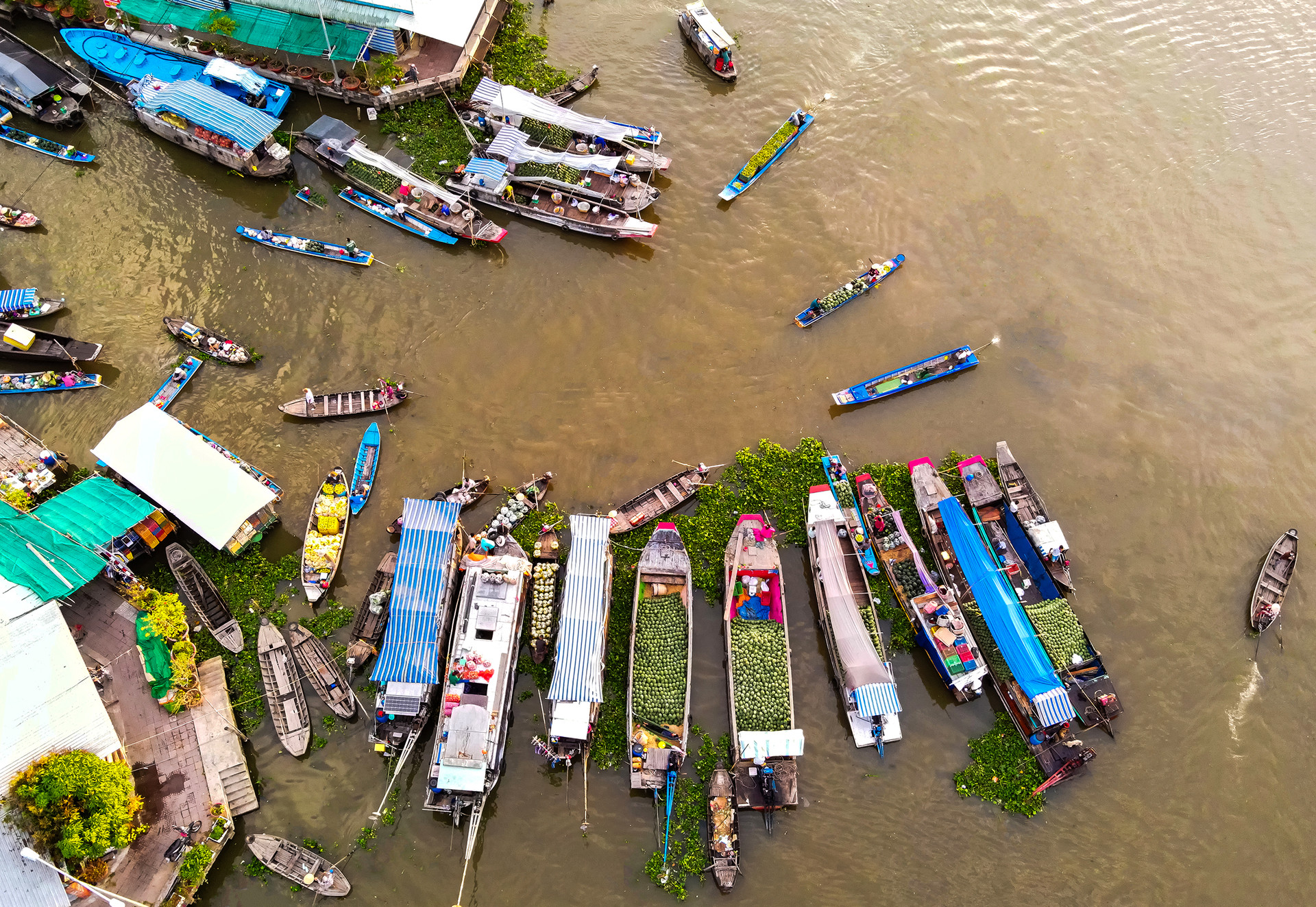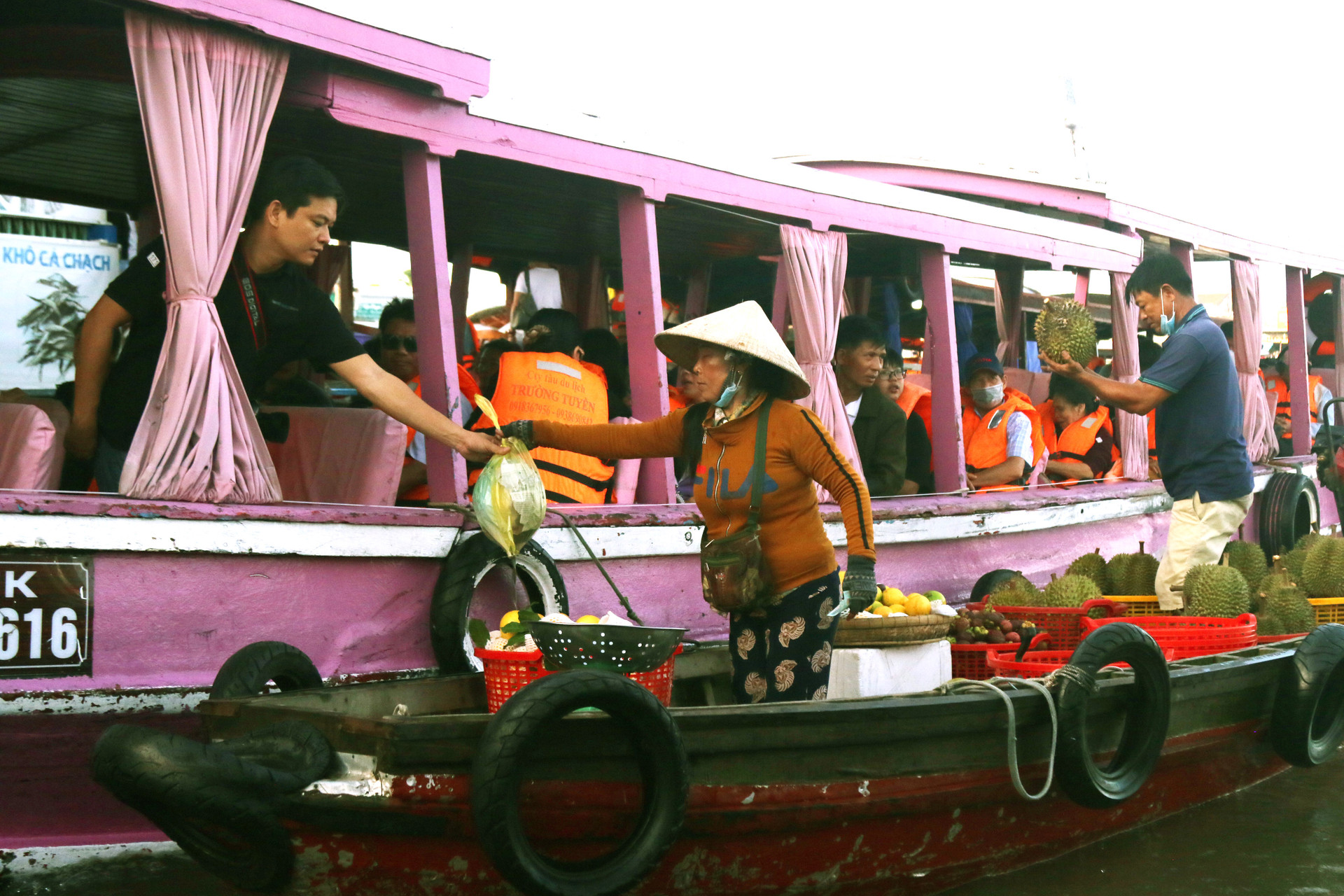Introduction:
The vibrant floating markets of the Mekong Delta stand as icons of cultural heritage and economic vitality, drawing travelers from far and wide to experience their unique charm. However, amidst the rapid development of road transportation and e-commerce, these markets face significant challenges in maintaining their traditional essence while embracing modernization. This article explores the urgent need to preserve and enhance the cultural and economic values of the floating markets in the Mekong Delta, highlighting the importance of striking a balance between tradition and progress.
Embracing Preservation and Development:
According to Dr. Tran Huu Hiep, Vice Chairman of the Mekong Delta Tourism Association, the floating markets not only in Vietnam but also across Southeast Asia face formidable challenges in the wake of advancements in transportation and trade. However, he emphasizes that with strategic restoration and development efforts, the floating markets in the Mekong Delta can harness their potential amidst economic shifts.
Dr. Hiep underscores the necessity of preserving the core essence of the floating markets, which are deeply rooted in the region’s unique geographical and cultural landscape. The symbiotic relationship between the Mekong River and its surrounding lands has fostered a rich biodiversity and a thriving agricultural and aquatic economy, forming the foundation of the region’s cultural identity.
Maintaining Cultural Integrity:
Central to the preservation and development of floating markets like Cai Rang is the safeguarding of their cultural integrity. Dr. Hiep emphasizes the need to view these markets through the lens of their historical evolution, recognizing their significance beyond mere economic transactions. He asserts that initiatives to enhance the markets should be mindful of their cultural heritage, ensuring that economic activities complement rather than overshadow traditional practices.
Dr. Hiep advocates for a holistic approach that integrates cultural preservation with tourism development. By revitalizing traditional arts, such as the renowned Southern folk music performances, and enhancing the overall visitor experience, floating markets can evolve into dynamic cultural destinations while maintaining their authenticity.
Echoing his sentiments is renowned cultural commentator Nhâm Hùng, who stresses the importance of viewing floating markets not merely as commercial hubs but as living repositories of local heritage. He urges stakeholders to prioritize initiatives that breathe new life into traditional arts and practices, ensuring that economic development does not come at the expense of cultural integrity.
Striking a Balance: In navigating the waters of progress, the challenge lies in striking a delicate balance between economic progress and cultural preservation. Dr. Hiep cautions against the unchecked pursuit of modernization, which risks eroding the soul of floating markets.
Instead, he advocates for a nuanced approach that leverages the strengths of both tradition and innovation. By fostering synergies between tourism development and cultural conservation, stakeholders can create a sustainable framework that honors the past while embracing the future.
Collaborative Endeavors for Sustainable Growth: As the Mekong Delta navigates the currents of change, collaboration emerges as the cornerstone of sustainable growth. Dr. Hiep emphasizes the need for collective action, involving local communities, government agencies, and tourism authorities, to chart a course towards a prosperous and culturally vibrant future for floating markets.
Conclusion: In the tapestry of the Mekong Delta, floating markets stand as beacons of resilience and tradition. By weaving together the threads of cultural preservation, economic innovation, and collaborative stewardship, these markets can continue to thrive as emblematic symbols of the region’s enduring spirit. As the sun rises over the tranquil waters, it illuminates not just the bustling commerce of the markets but also the timeless legacy of Mekong Delta’s cultural heritage, cherished and preserved for generations to come.
Harmonizing Economic and Cultural Interests:
In the face of evolving transportation and trade dynamics, achieving a balance between economic viability and cultural preservation is paramount. Dr. Hiep suggests that while modernization is inevitable, interventions should be carefully calibrated to avoid disrupting the intrinsic charm of the markets.
He warns against overlooking the primary function of floating markets as centers of commerce and exchange among local communities. Instead of solely catering to tourism, efforts should focus on harmonizing the diverse interests and obligations of the markets, ensuring their sustainability as both economic hubs and cultural landmarks.
Conclusion:
The future of Mekong Delta’s floating markets hinges on the delicate balance between tradition and progress. By prioritizing the preservation of their cultural heritage while embracing strategic development initiatives, these markets can continue to thrive as symbols of resilience and vitality in the evolving landscape of the Mekong Delta. Through collaborative efforts between local communities, tourism authorities, and policymakers, the timeless allure of the floating markets will endure, captivating visitors for generations to come.
